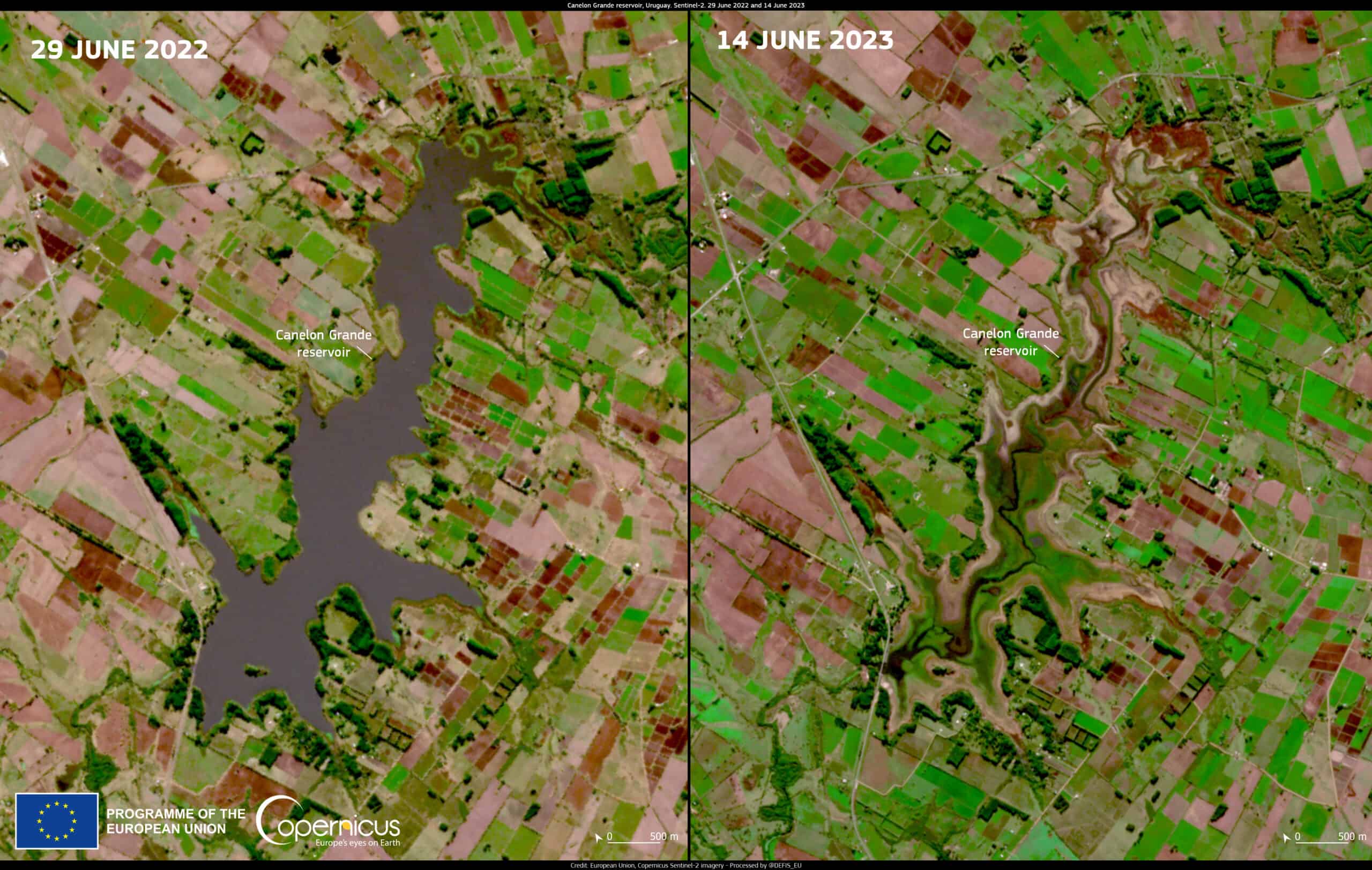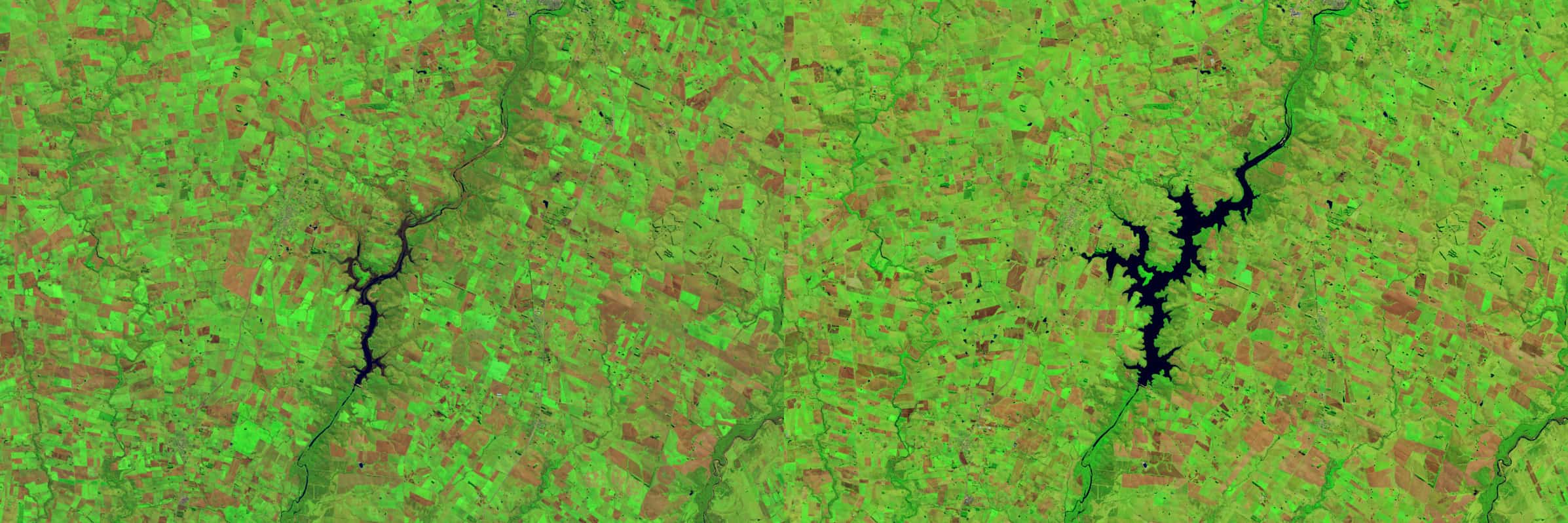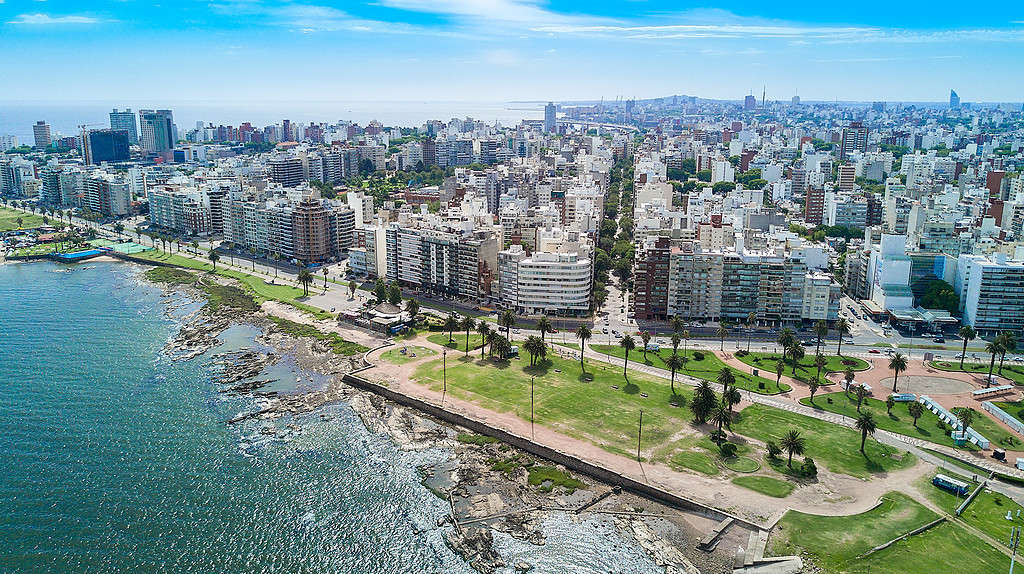A prolonged drought in Uruguay has made tap water undrinkable for millions of people across the country. The drought is caused by a mixture of different factors, including low levels of precipitation, rising temperatures, and the La Niña phenomenon — a reminder of the ‘new normal’ we’ll have to face with climate heating.

The new abnormal
“We used to drink tap water… not anymore now,” says Daniela Hirschfeld, a science journalist based in Uruguay. “We now have to buy bottled water.”
The drought technically started in 2018 but got significantly worse in 2023. By February this year, the drought had already caused agricultural losses of over $1 billion and brought complications for drinking water in metropolitan areas.
Three consecutive years of drought and higher-than-average temperatures put extra stress on the country’s water systems. Now, President Luis Lacalle Pou declared a state of emergency in the capital Montevideo because of a water shortage.
Uruguay is a relatively wealthy Latin American country that historically has had rich water resources. But in recent years, it’s been increasingly affected by forest fires and drought.
The situation is particularly challenging in Uruguay’s capital, Montevideo. Montevideo hosts around 40% of the country’s 3.4 million inhabitants. The city relies on a dam which is the only source of drinking water for the Montevideo area. This dam now only has around 3% of its water capacity because of the drought. The dam’s levels are so low that old structures, including a bridge, are re-emerging from the low waters.

Undrinkable tap water
To stretch the resources of the reservoir, authorities have channeled water from the Río de la Plata. The problem is that the river also has some salt water — it has some areas in which freshwater and seawater mix. This brings the seawater into the reservoir, making the city’s drinking water supply undrinkable.
With more and more of this saltwater coming in, tap water has reached a point where it has become undrinkable.
“The mixture of waters makes tap water almost unbearable to drink in terms of taste, and also pose some health risks. This is the main impact for the people,” Hirschfeld adds.

Initially, the Ministry of Health raised the permitted levels of sodium per liter of water to twice the normal rate. But now, with the levels of salt in the water surging way beyond that, most inhabitants in Montevideo have stopped drinking tap water.
There has been no shortage nor cut-off water supply, Hirschfeld told ZME Science, but the quality of the water is the problem.
A poll in May found that roughly half of people in the area affected had reduced their consumption of tap water and around a third had stopped drinking it completely. Things are now significantly worse than in May.
To address this, the government has declared a state of emergency. They’ve exempted all bottled water from taxes and claim to be providing free bottled water to over half a million people. But Montevideo is now home to scenes that would have seemed unimaginable a few years ago.
Someone to blame
According to El Pais, there are “crews of workers looking for underground water in the main parks of the city” and demonstrations against large companies that people perceive as “water looters”.
Google is one such company taking the heat because of its plans to open up a data center in Uruguay. The center would use the equivalent of the domestic daily use of 55,000 people. Currently, however, much of Uruguay’s water goes to other businesses.
Daniel Pena, a researcher at the University of the Republic in Montevideo, told The Guardian that only a tiny proportion of the water in Uruguay is used for human consumption.
“The majority is used for big agro-industries, such as soya, rice and wood pulping,” the researcher explained. Just last month, the world’s biggest pulping plant started operations in Uruguay.
Meanwhile, others are blaming authorities for not investing in critical infrastructure sooner. Building new dams now takes time and won’t alleviate the problem quickly. Given that the situation has been unfolding for a couple of years already, the water infrastructure in Uruguay has been particularly underfunded. Some researchers also blame the government for only now implementing solutions that were recommended by scientists months ago.
This is all the more surprising because, in Uruguay, the right to water is enshrined in the constitution. In fact, Uruguay, the South American country with the highest GDP per capita, was the first country in the world to declare access to water a constitutional right.
Ultimately, what’s happening now in Uruguay is a reminder of the problems that are likely to become more common across the world.
Climate heating and water shortage
The situation in Uruguay is complicated. There’s no simple and clear cause of why this is happening. The country is experiencing one of the lowest levels of precipitation in the past century. It’s also affected by three years of La Niña, a dominant climate pattern in the Pacific Ocean that can affect weather worldwide. It’s also unfortunate that water infrastructure investments were not more proactive and that industries take such a large claim of the country’s water.
But ultimately, it’s exactly the type of event you expect to see more with climate heating.
“Climate change is definitely playing a role in the high temperatures that Argentina and other countries in the region are currently experiencing,” Friederike Otto, climate scientist and co-author of a 2023 study on the South American drought, said in a statement.
Otto’s research suggests that climate change isn’t the main driver of this drought, but it’s exacerbating the events and fueling worse impacts. Extreme drought events existed before man-made climate change and they will continue to exist — the problem is that man-made climate change is making them worse and more common.
For now, the Uruguayan water supply is guaranteed in key infrastructure areas, the country’s president says. But for millions of people, drinking tap water is simply not an option — and bottled water may be unaffordable for many.
Uruguay isn’t the most drought-prone country in the world, and it’s not the most vulnerable country. This is more of an ‘if it can happen here, it can happen anywhere scenario.’
For many Uruguayans, and for many people around the world, the prolonged water crisis is more than a reminder of their government’s failings: it’s a stark warning of a world unprepared for the challenges of climate change. As more regions grapple with extreme weather events and scarce resources, the world will need to take decisive action to ensure access to clean, drinkable water for all.
The Uruguayan water crisis should be a wake-up call for all of us. Climate change is no longer a distant threat. It’s here, it’s now, and it’s time for us to adapt and respond. In Uruguay and beyond, our future depends on it.






